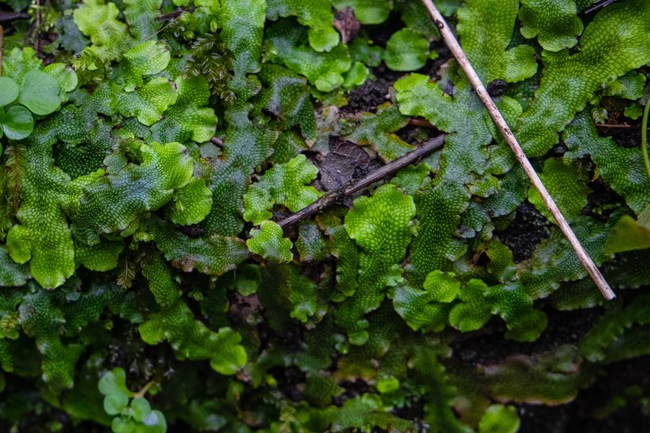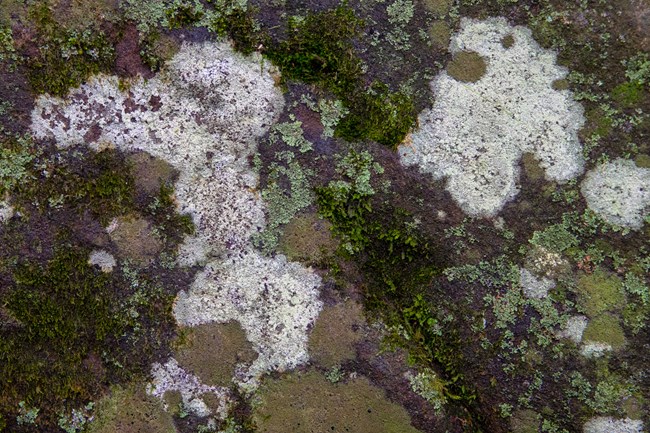|
Under a canopy of towering wildflowers and colossal trees, lies a much smaller community of plants. The world of mosses, liverworts, and lichens is one of exceptional beauty and diversity. These tiny lifeforms can thrive in some unlikely places like tree trunks, rock shelves, and historic structures. While mosses and liverworts are distant cousins to traditional plants, lichens can only claim a resemblance. What’s the Difference Between Mosses, Liverworts, and Lichens?
NPS Photo/ Kait Evensen MossMosses, also sometimes called bryophytes, are little flowerless plants that tend to grow in tufts or mats. Rather than using flowers and seeds, mosses reproduce by creating spores that are held in a little capsule. The lifecycle of a moss can be divided into two stages, the gametophyte stage and the sporophyte stage. While there are many complexities with these terms, it is enough to say that the gametophyte stage consists of the leaves, stems, and other structures that grow before the spore capsule. The sporophyte stage consists of the stalk, capsule, and spores that mosses use to reproduce. 
NPS Photo/ Kait Evenson LiverwortsLiverworts have many similarities to mosses. They too produce spores rather than flowers and grow in the same gametophyte and sporophyte stages. Subtle differences can help to distinguish these plants from the mosses. Rather than having distinct stems and leaves, liverworts have a combined structure called a thallus that branches creating flattened lobes. The stalks that hold the spore capsule are also much shorter and stouter than those of the mosses. 
NPS Photo/ Kait Evensen LichensLichens form from a symbiotic relationship between two different organisms, a fungus and an alga, meaning they are not plants at all. Each of these components provide critical functions that help the individual survive. The fungus makes up most of the lichen, giving it its shape and fruiting bodies while the algae provides the ability to photosynthesize. While algae normally need a lot of water to survive, the fungus provides shelter from drying elements like heat and wind, allowing lichens to exist even in hot dry climates. An Ability to SurviveWhile having many differences, these tiny organisms share the unique ability to go dormant in the absence of water. This process, called poikilohydry, carries with it some benefits and draw backs. Organisms with this feature can live in a variety of places, surviving an increasing number of droughts in a changing environment. However, an organism that has gone dormant cannot grow, and so they must rely on water to rehydrate them before they can continue to thrive. |
Last updated: November 10, 2021
